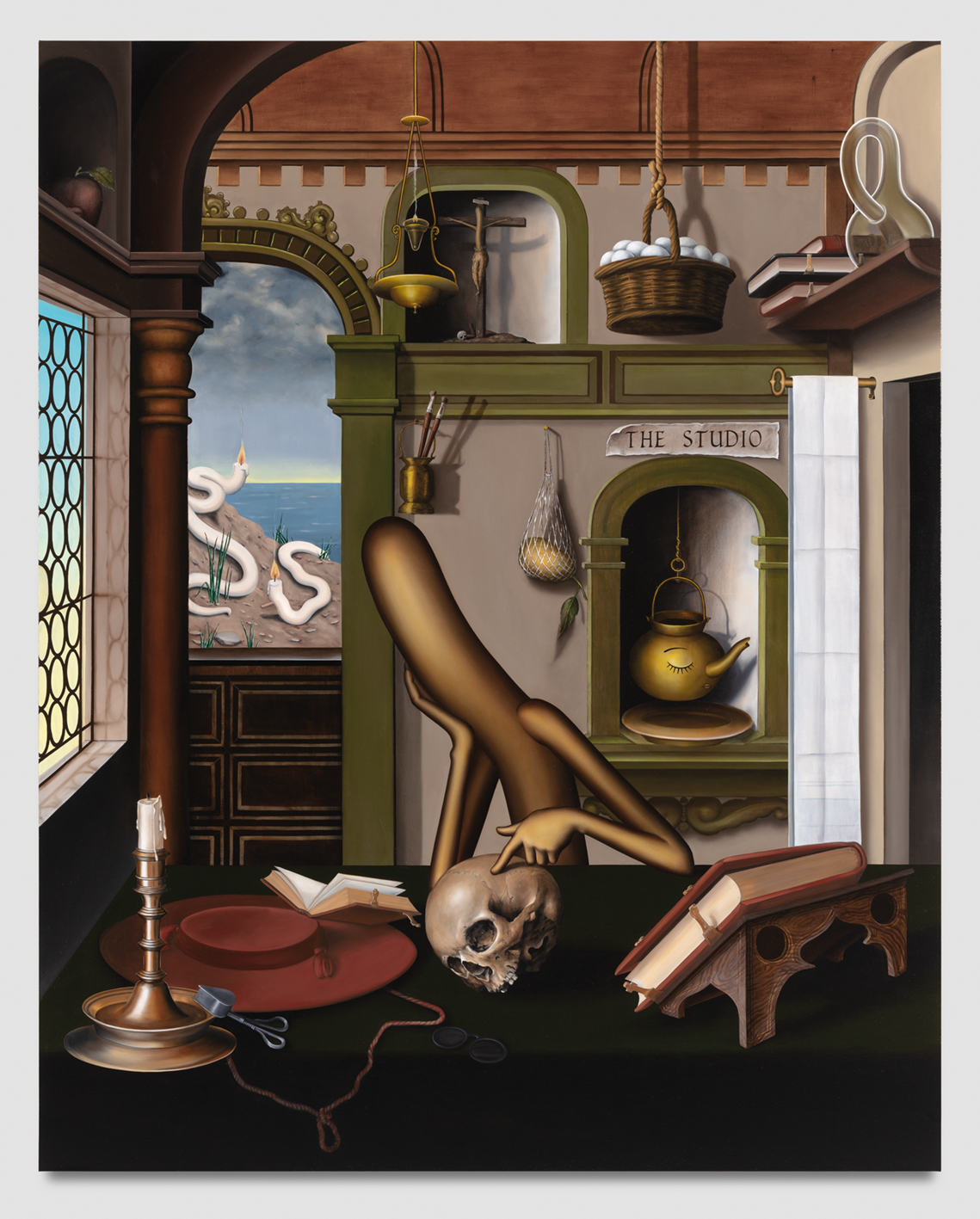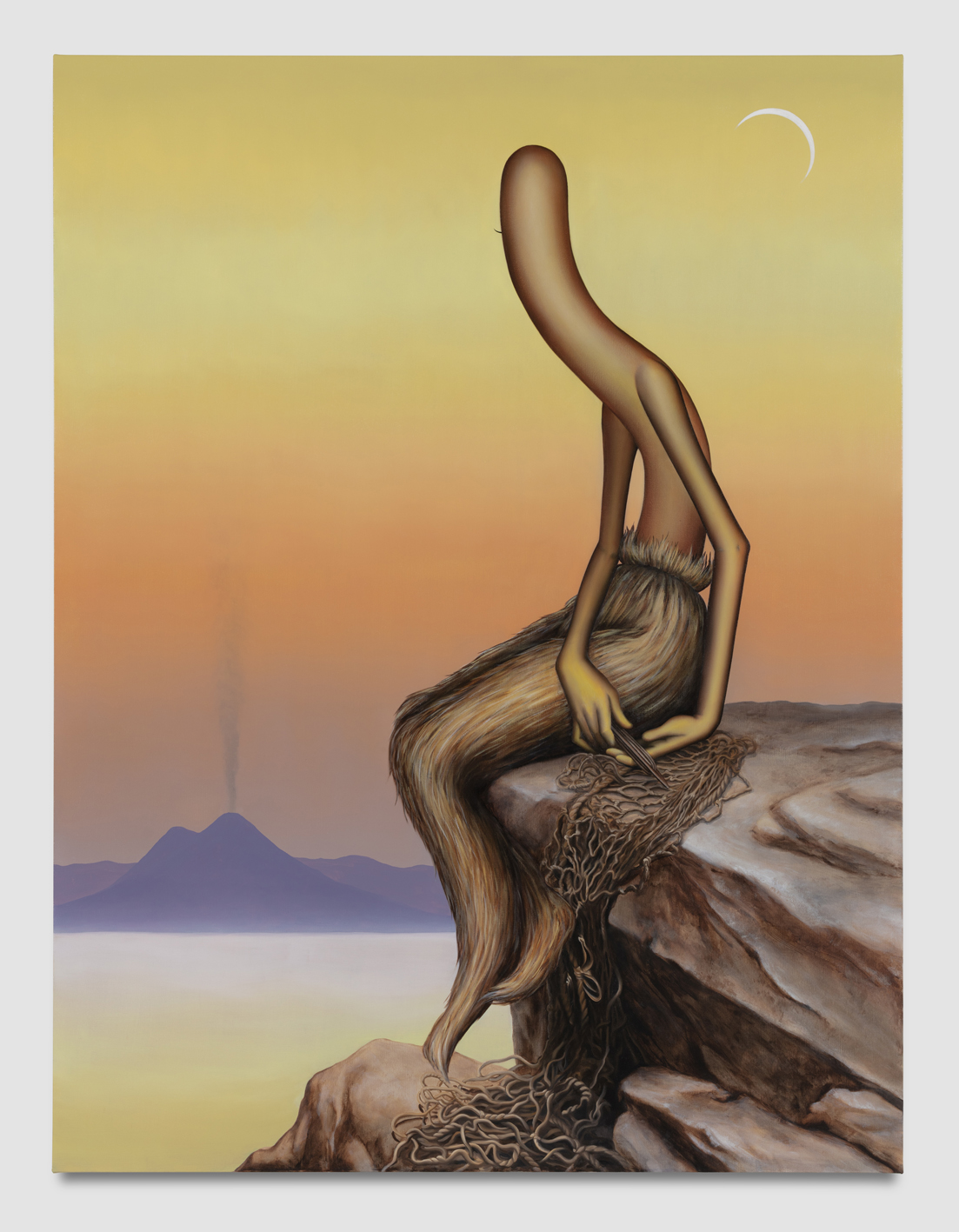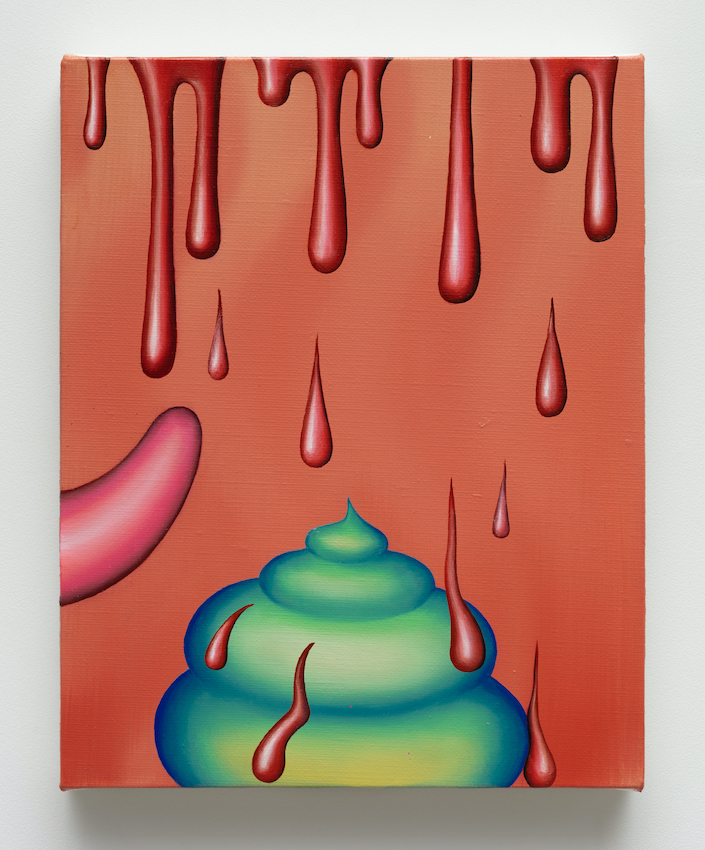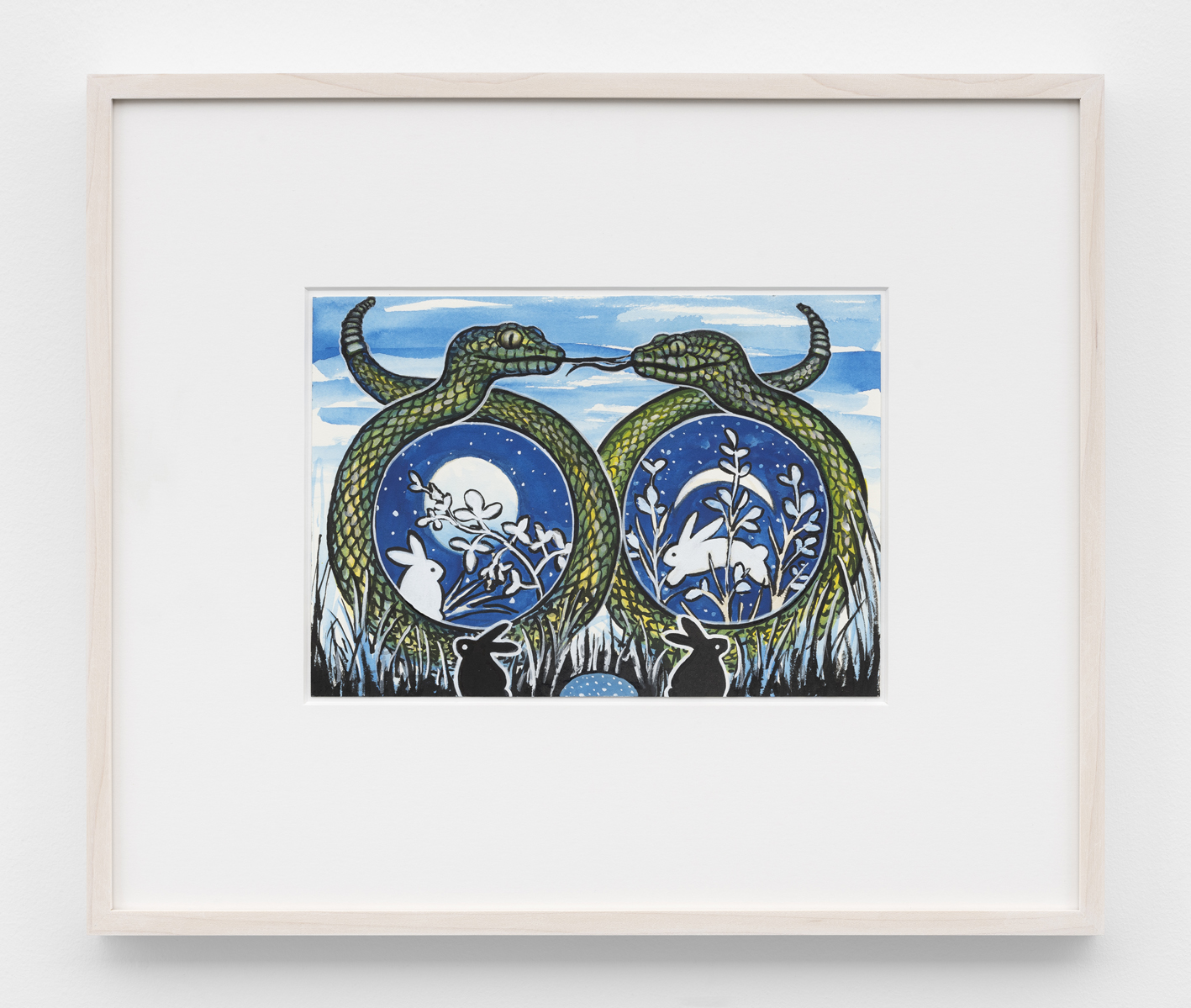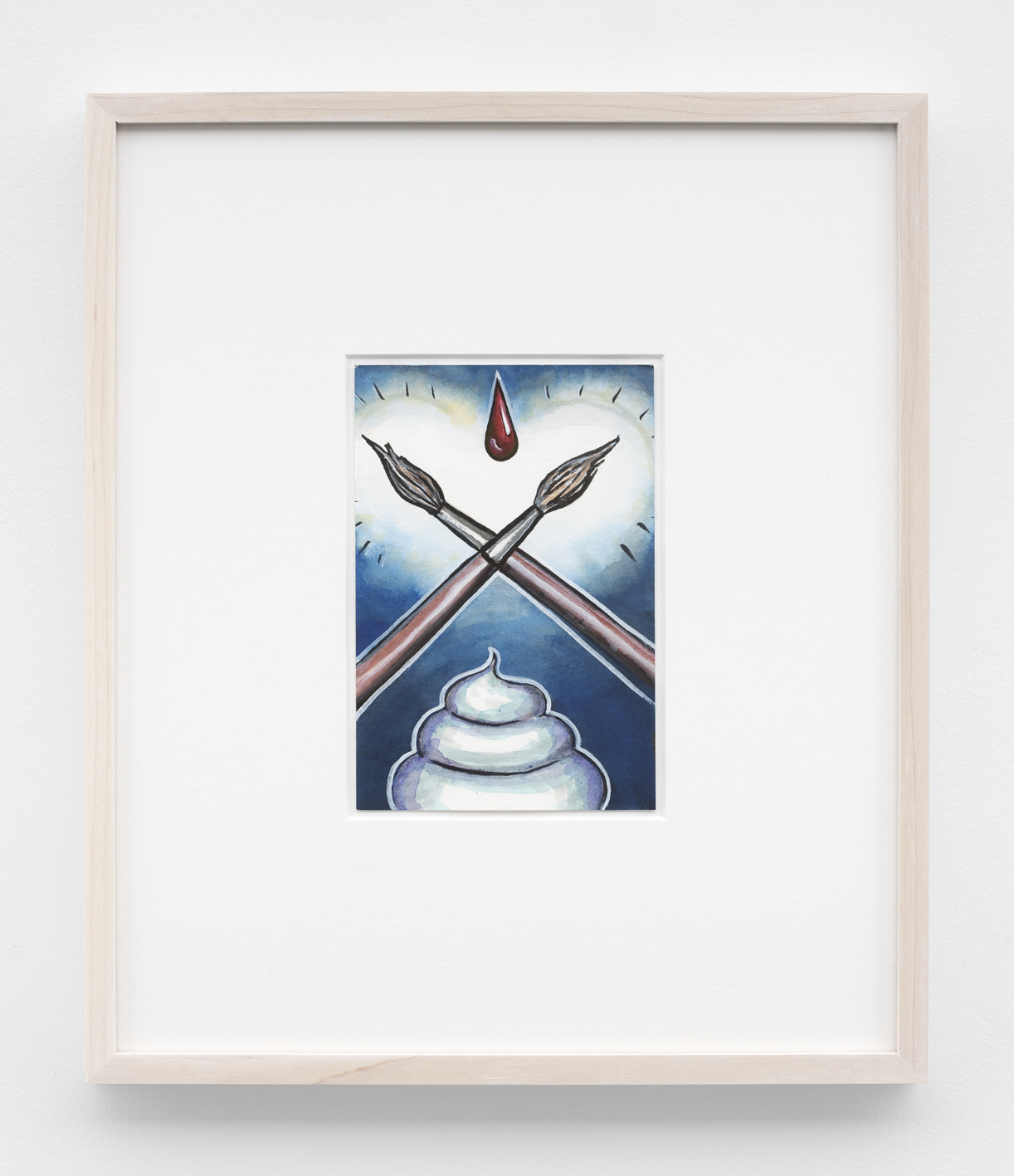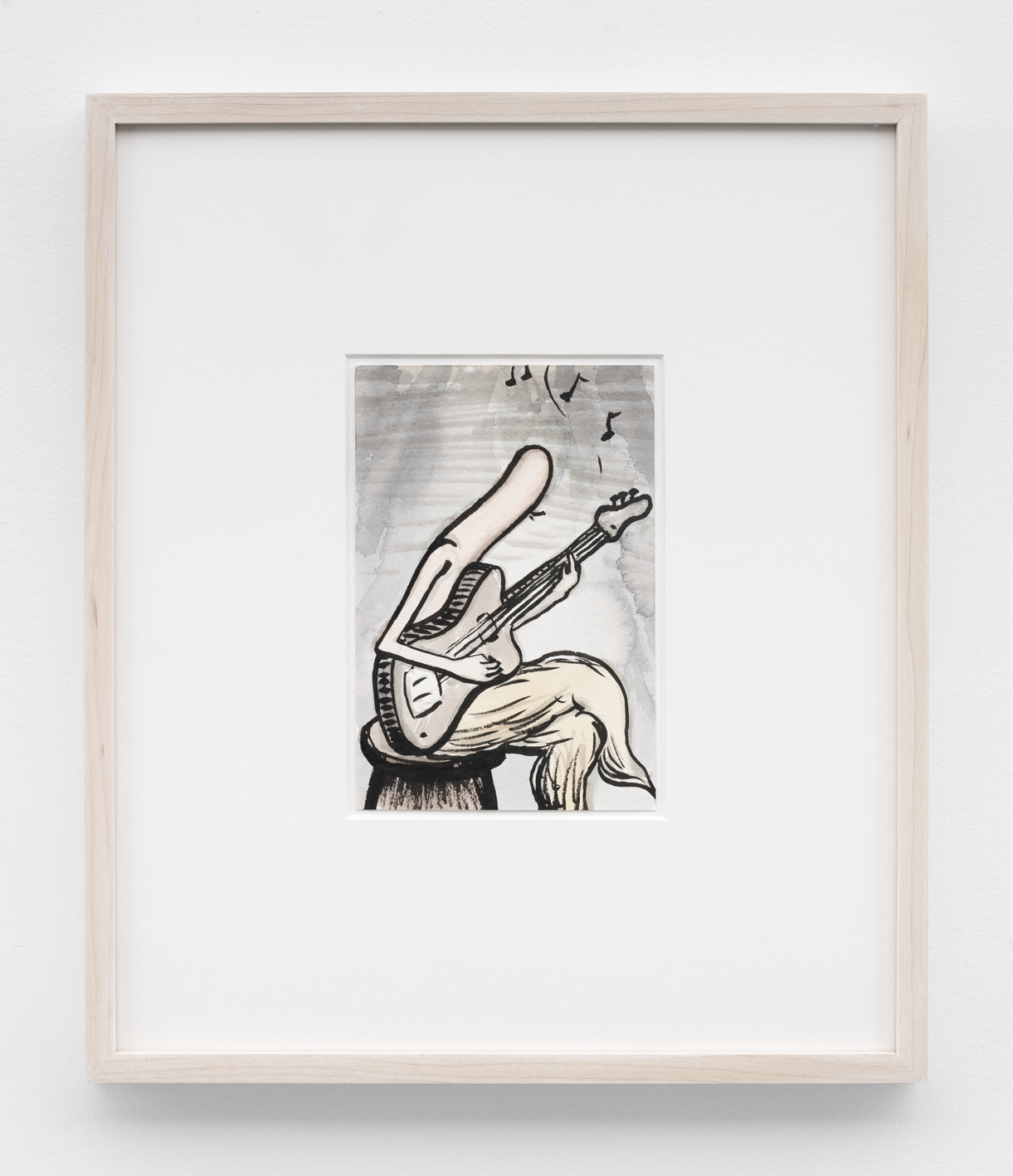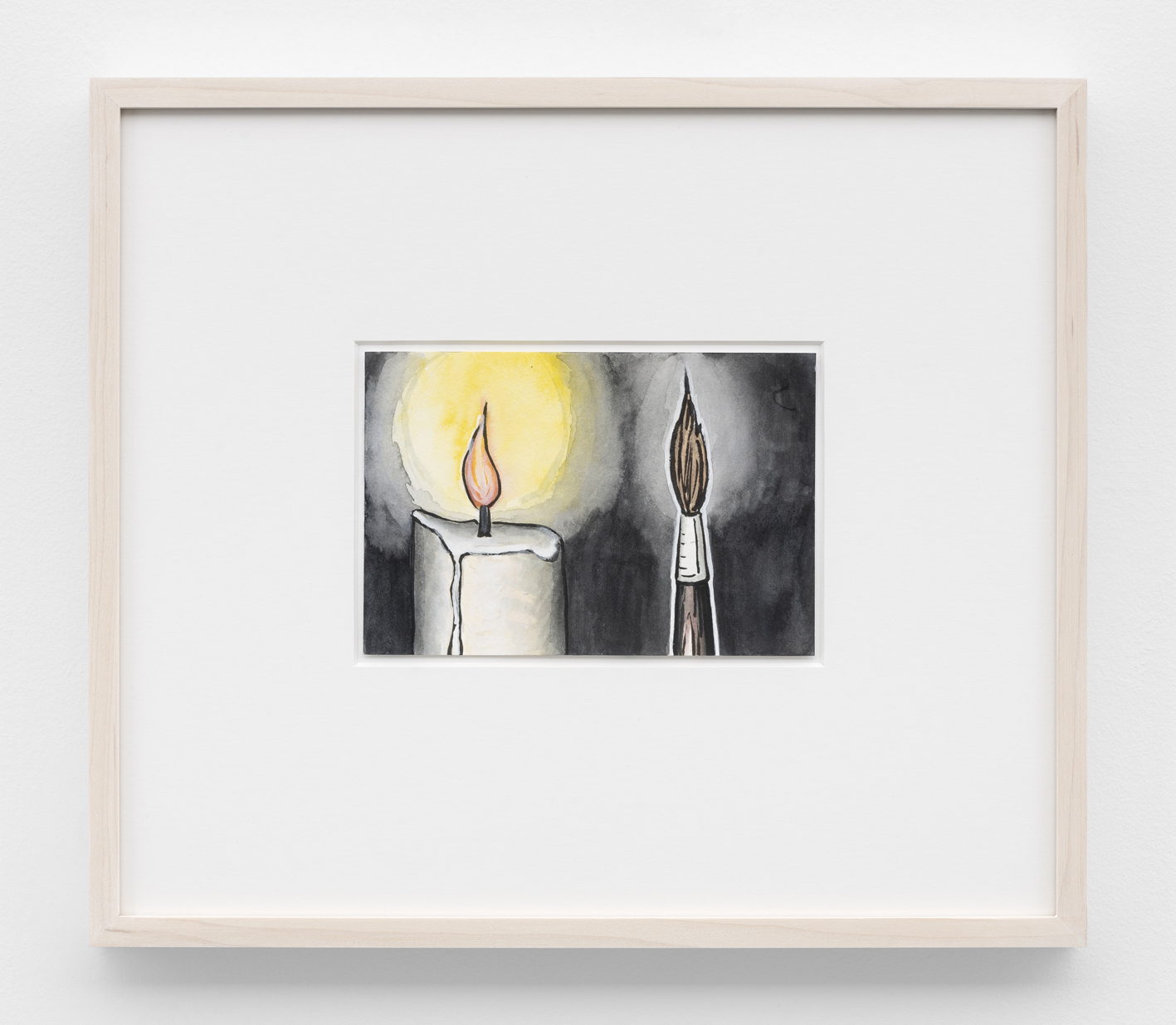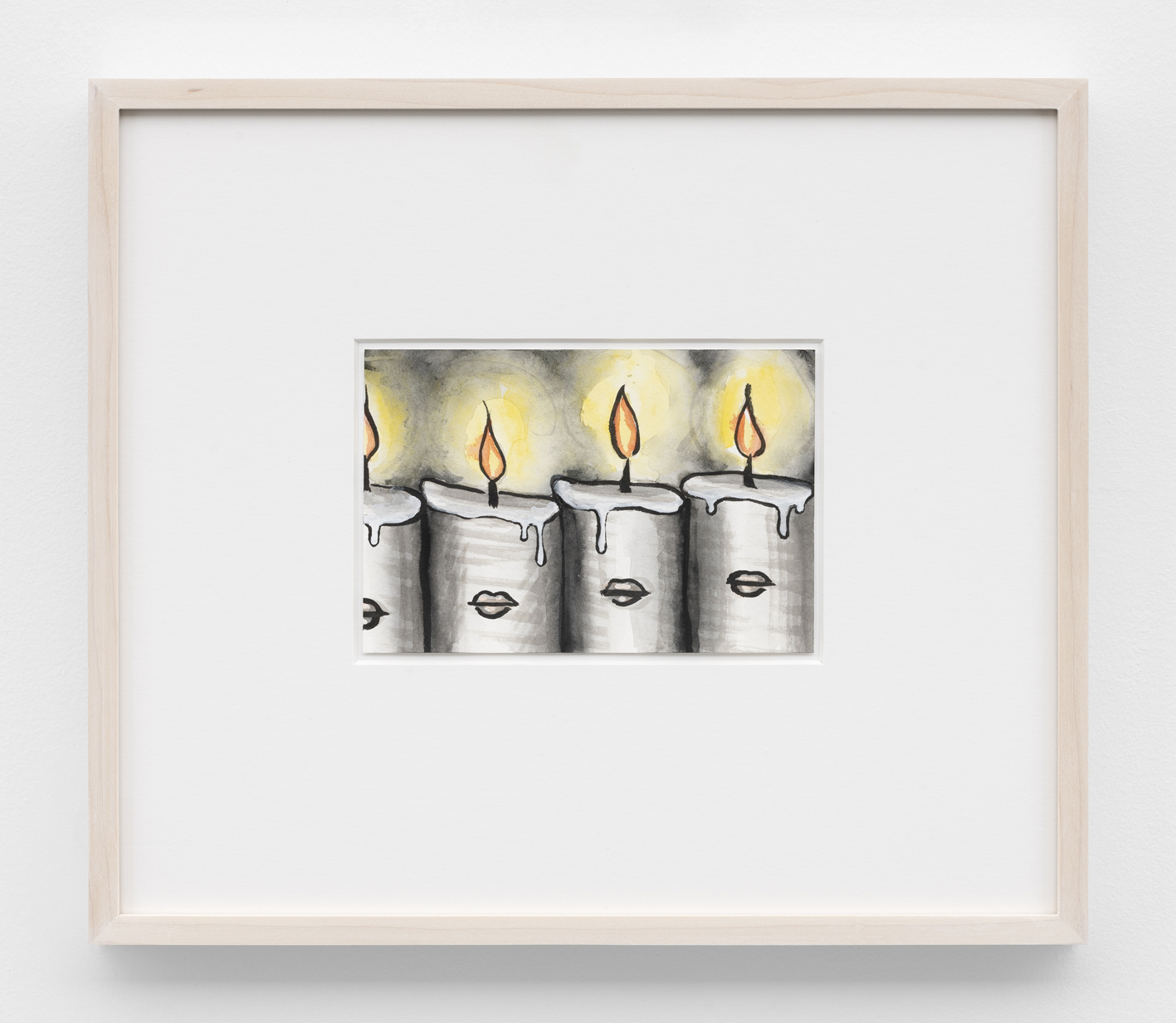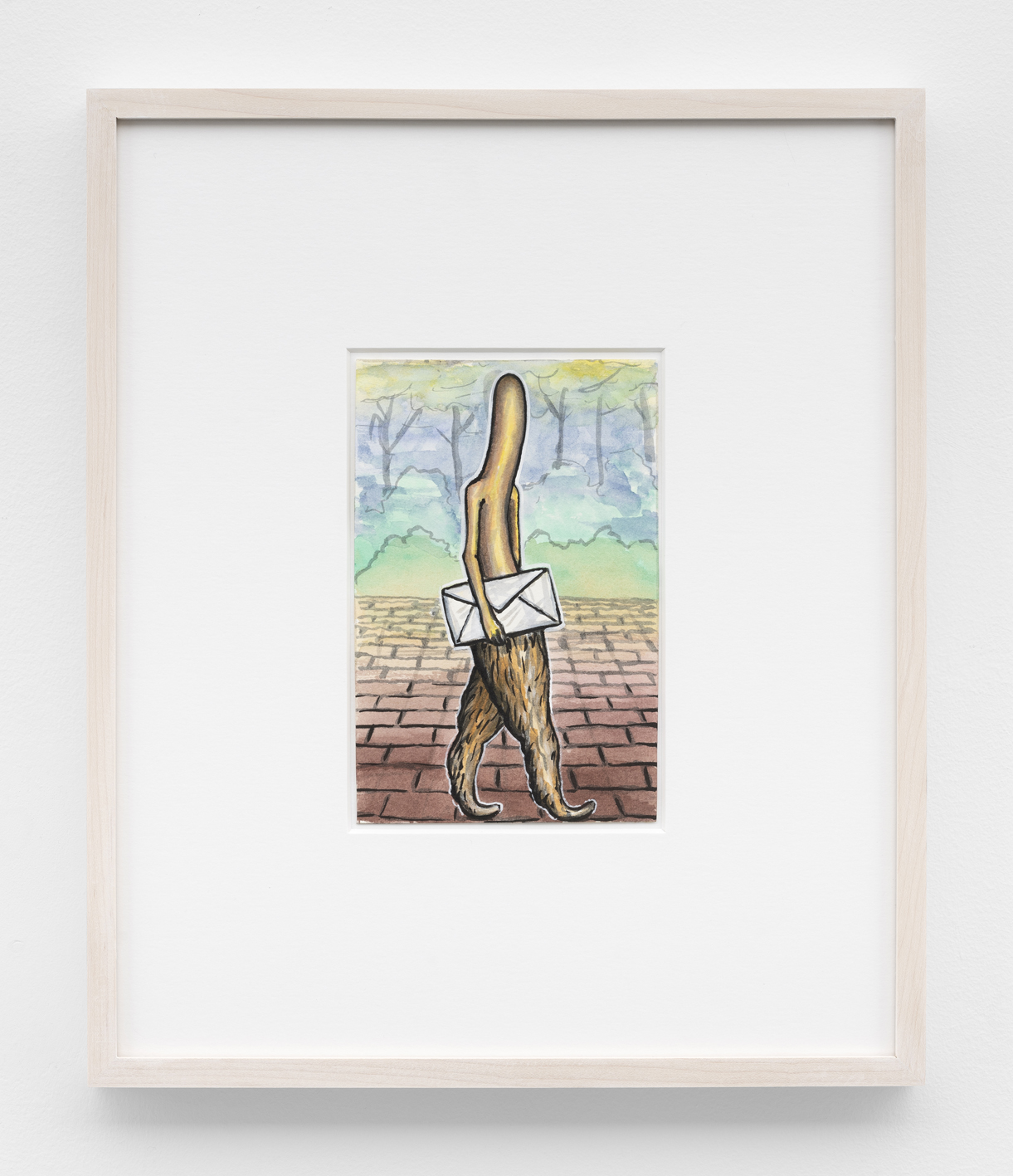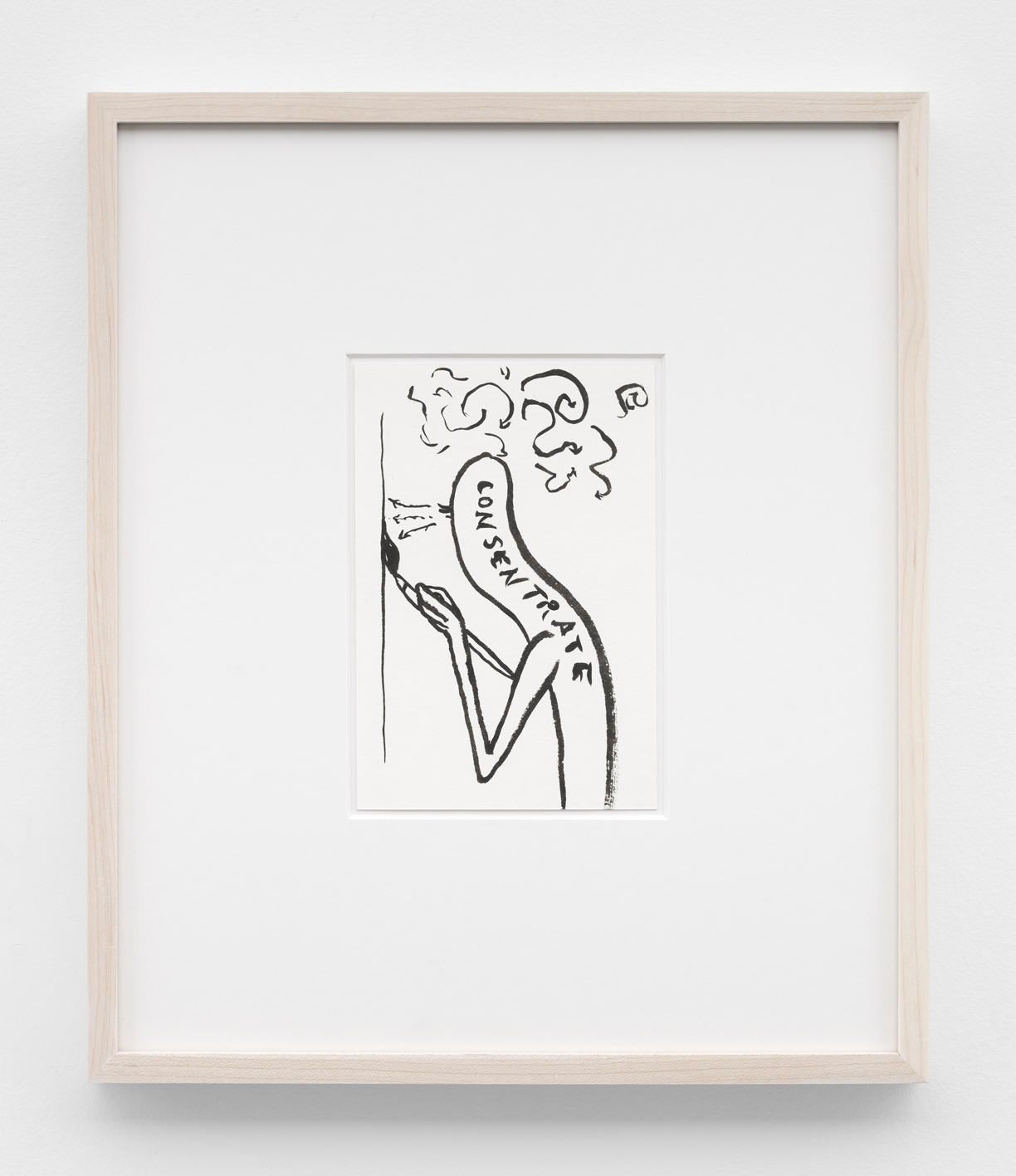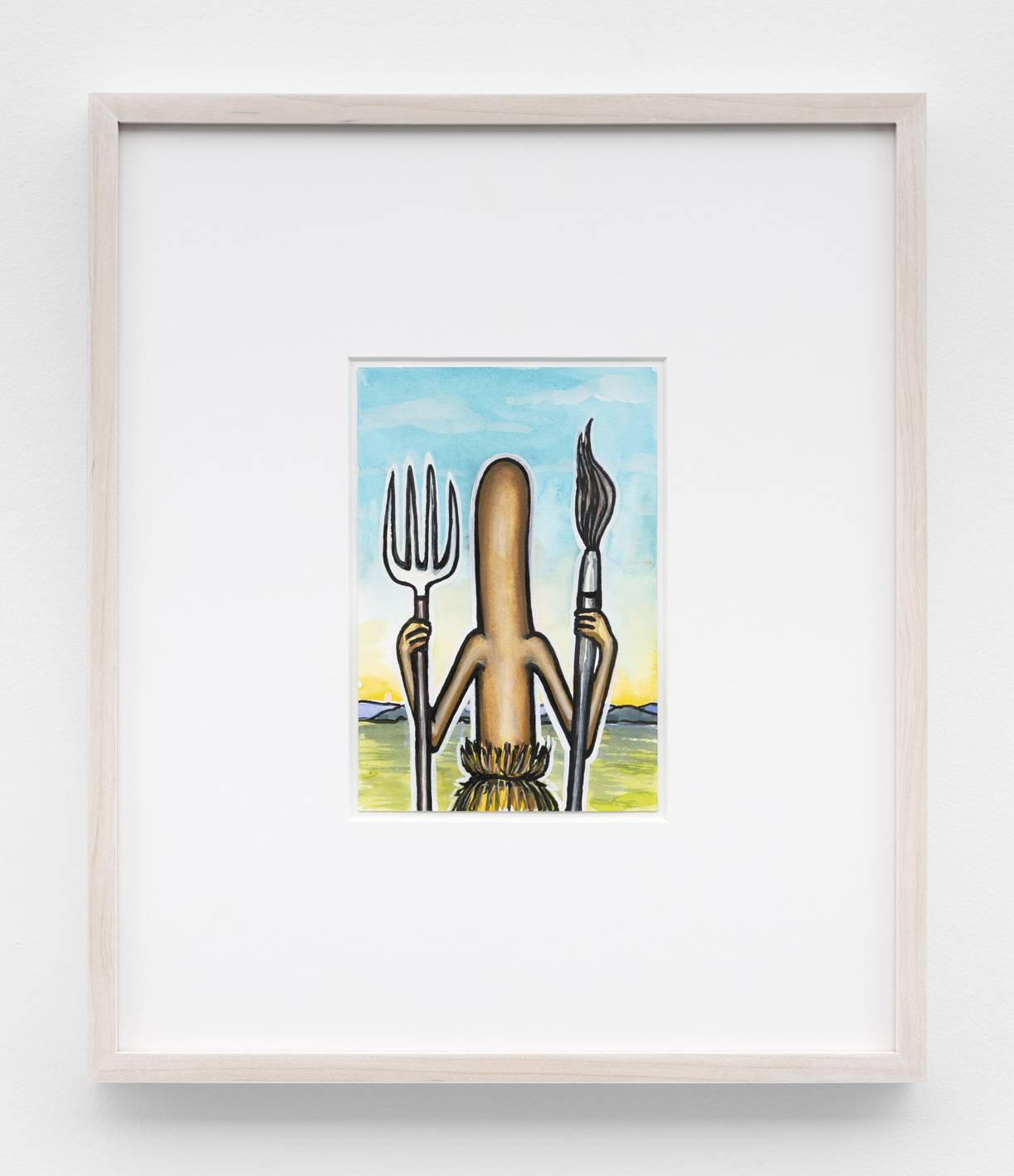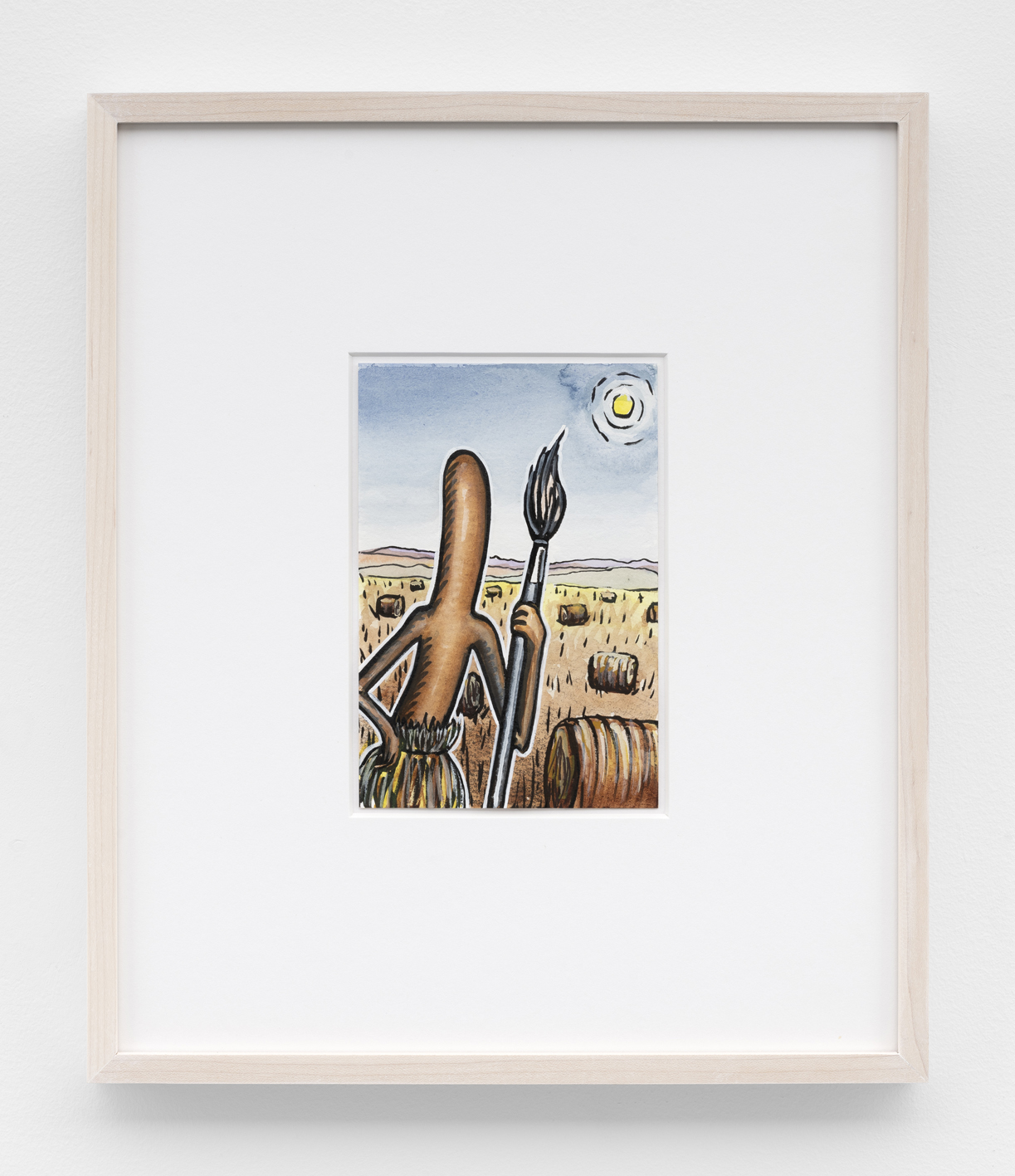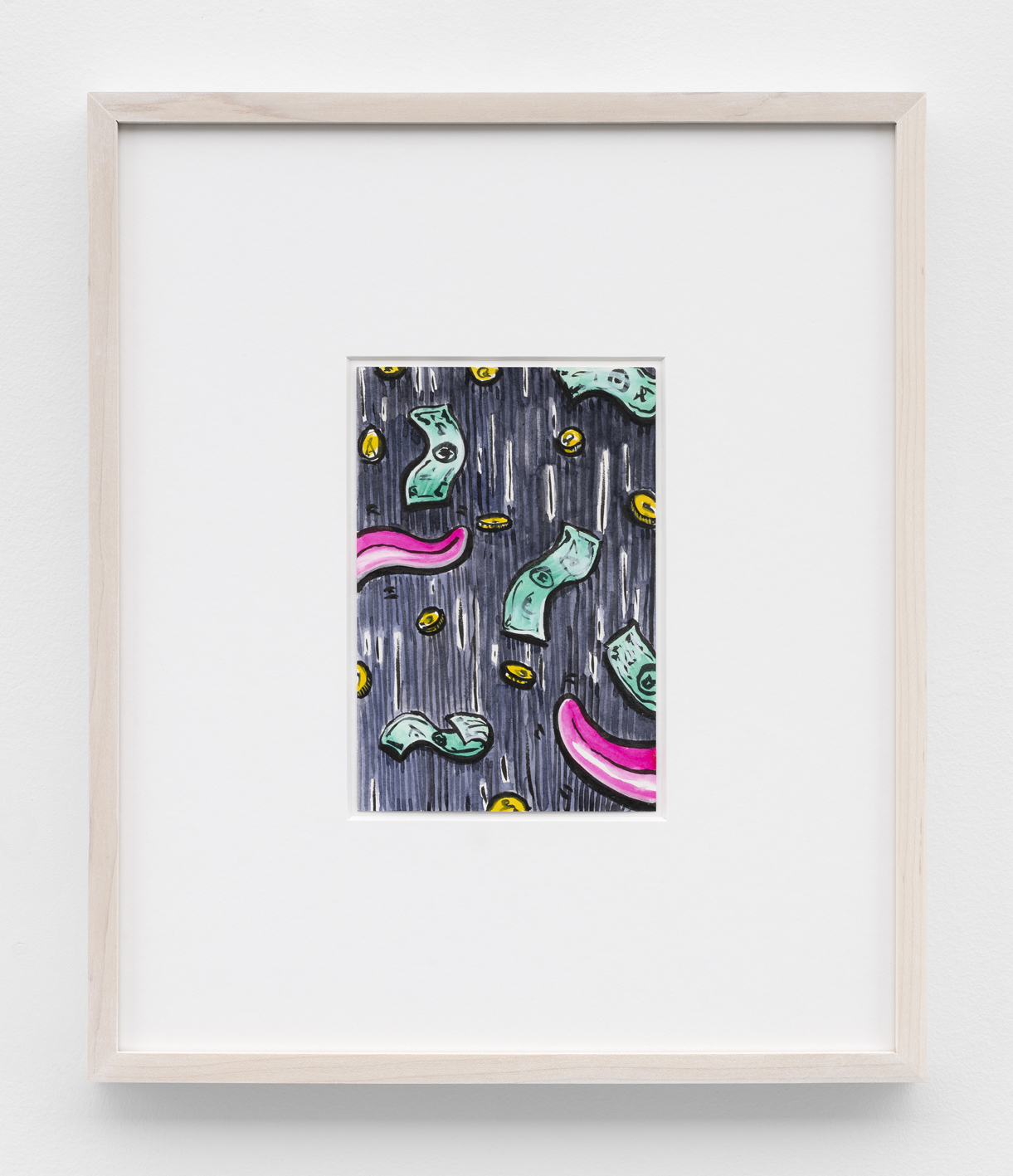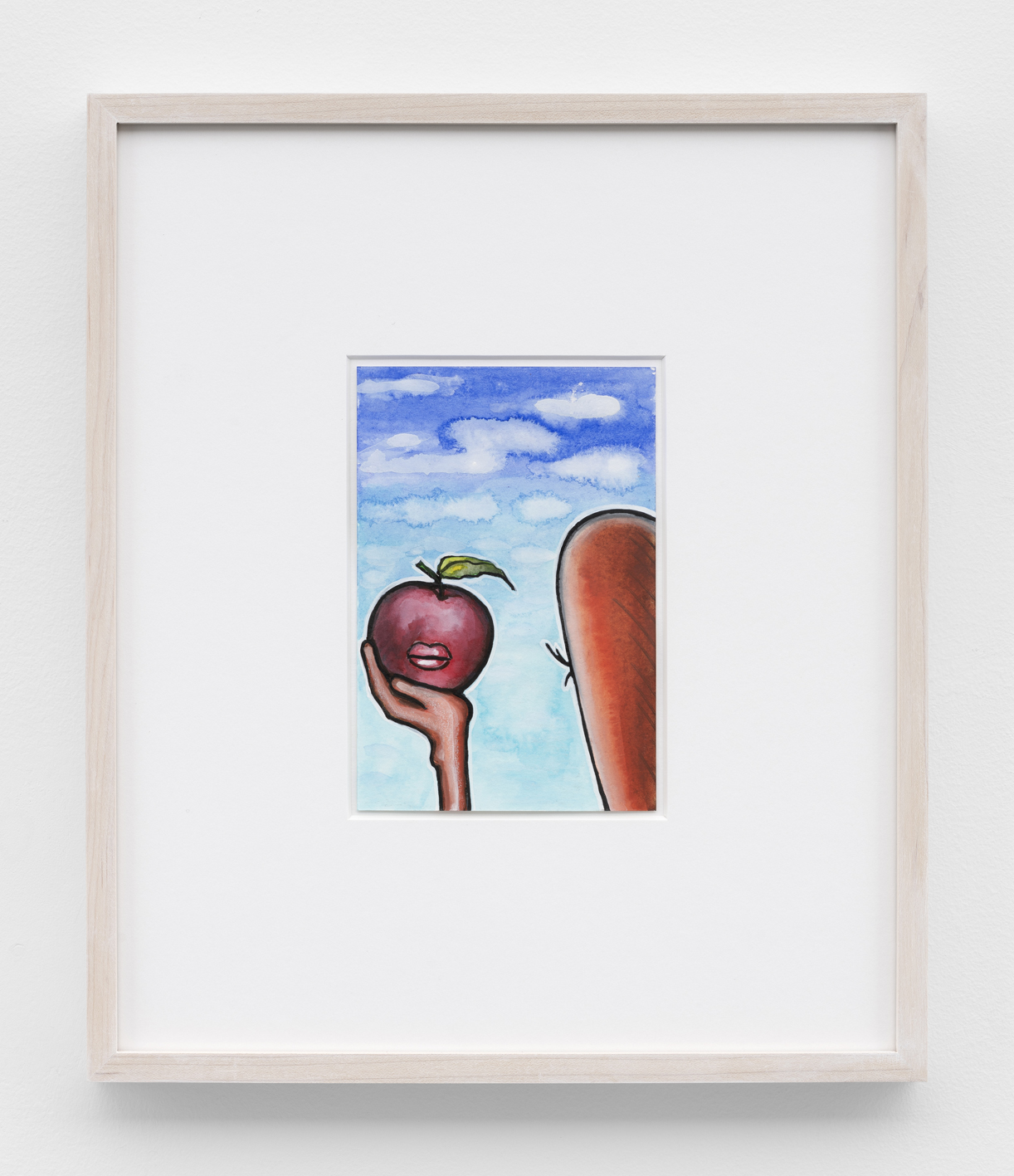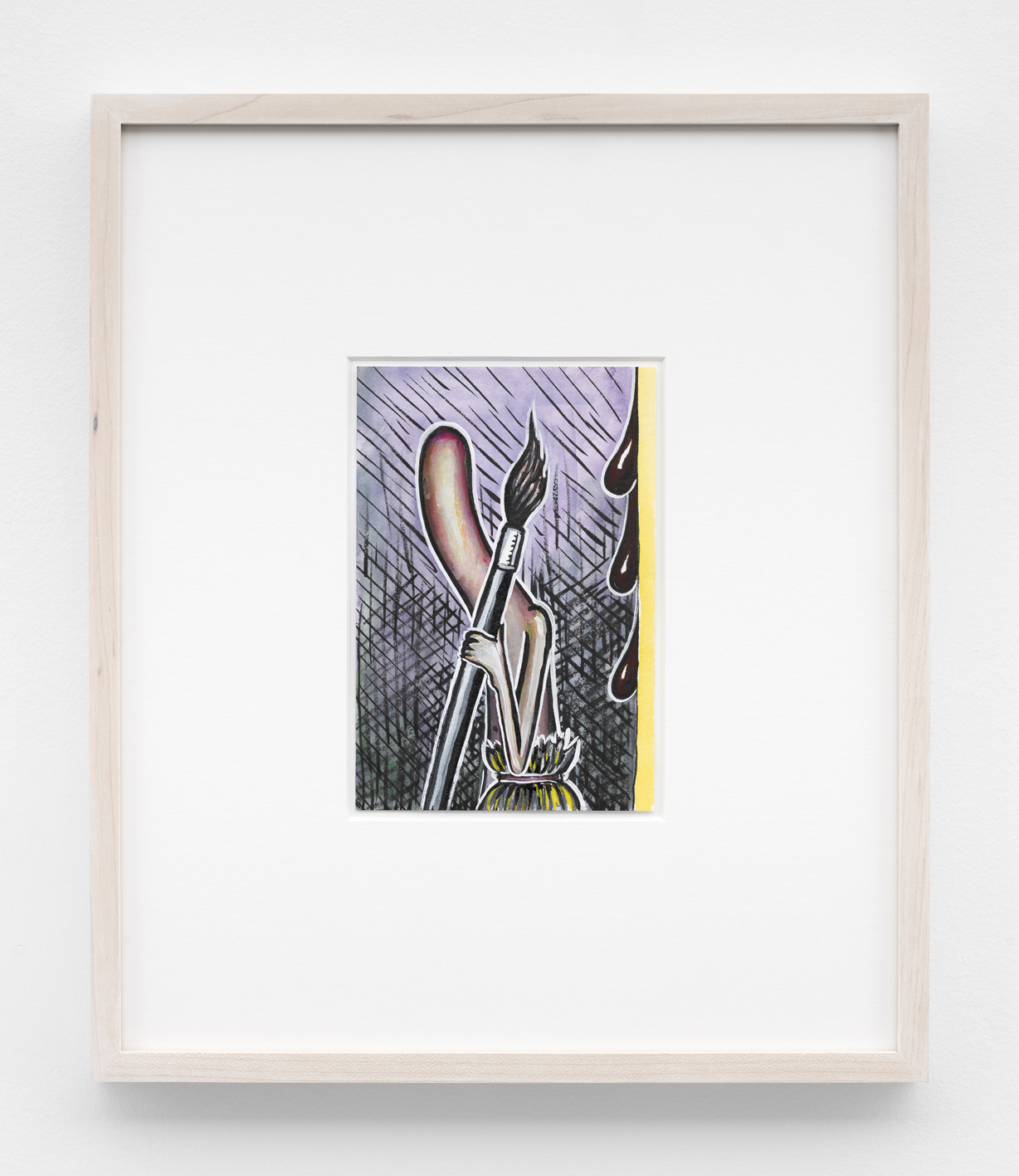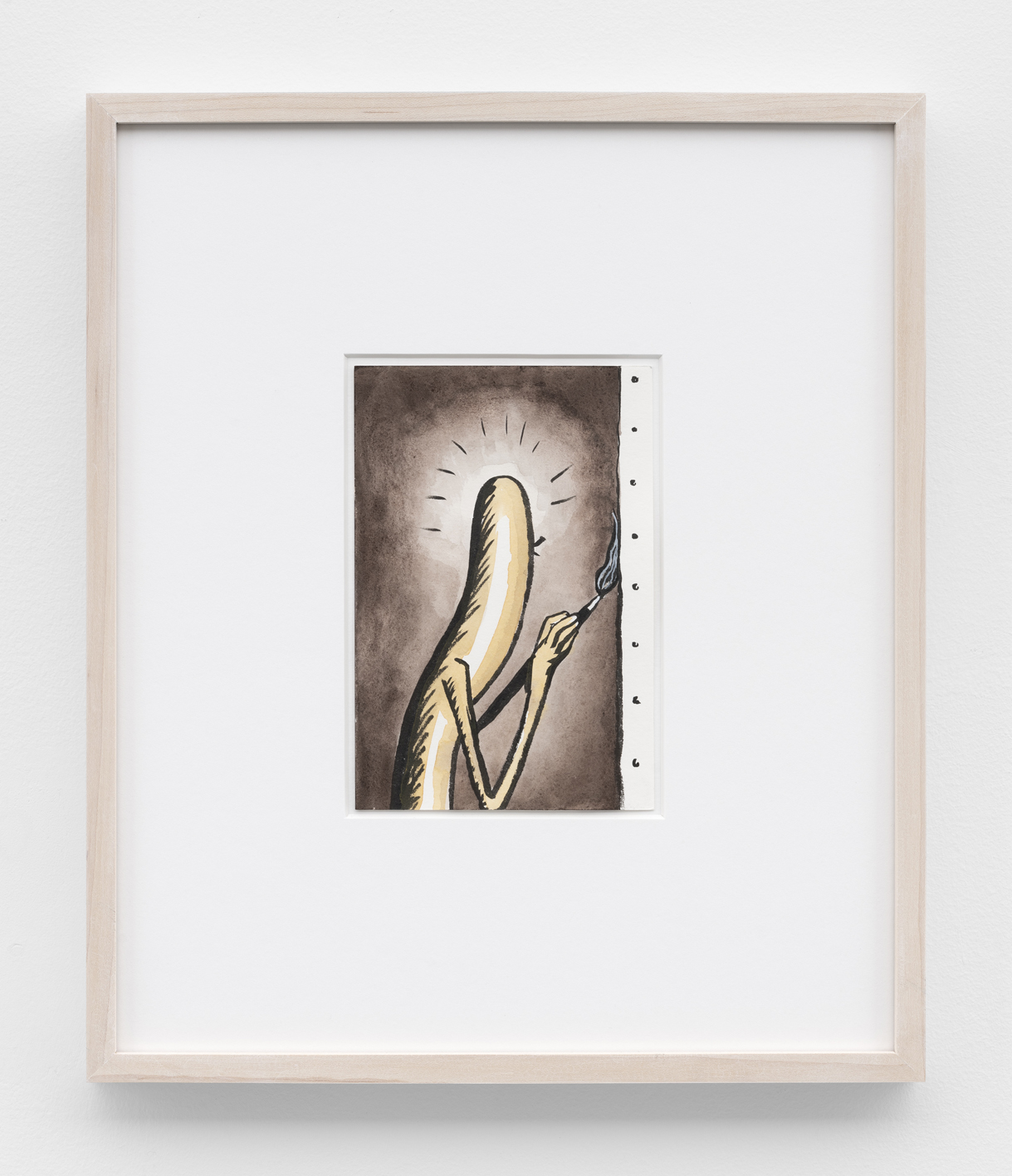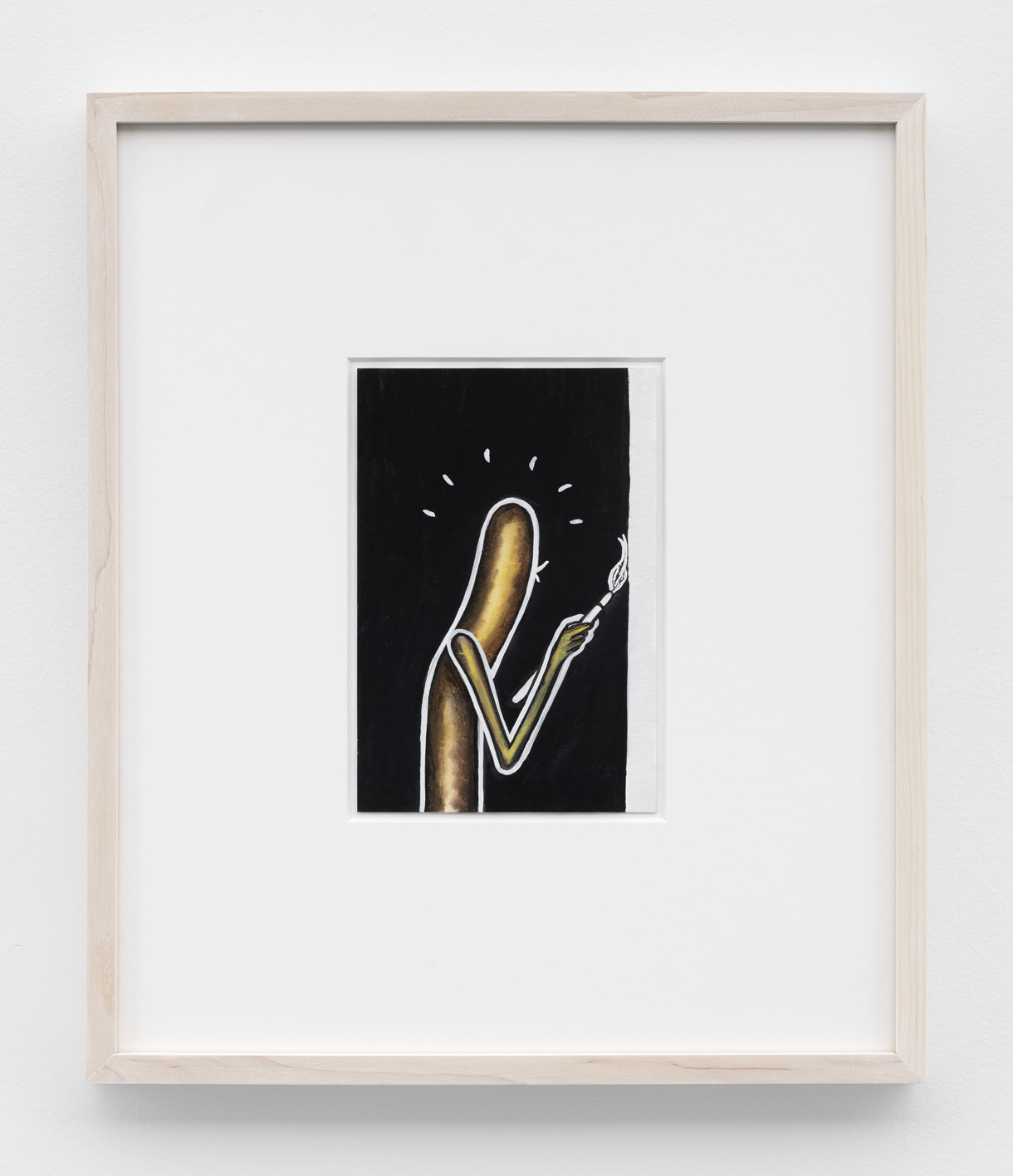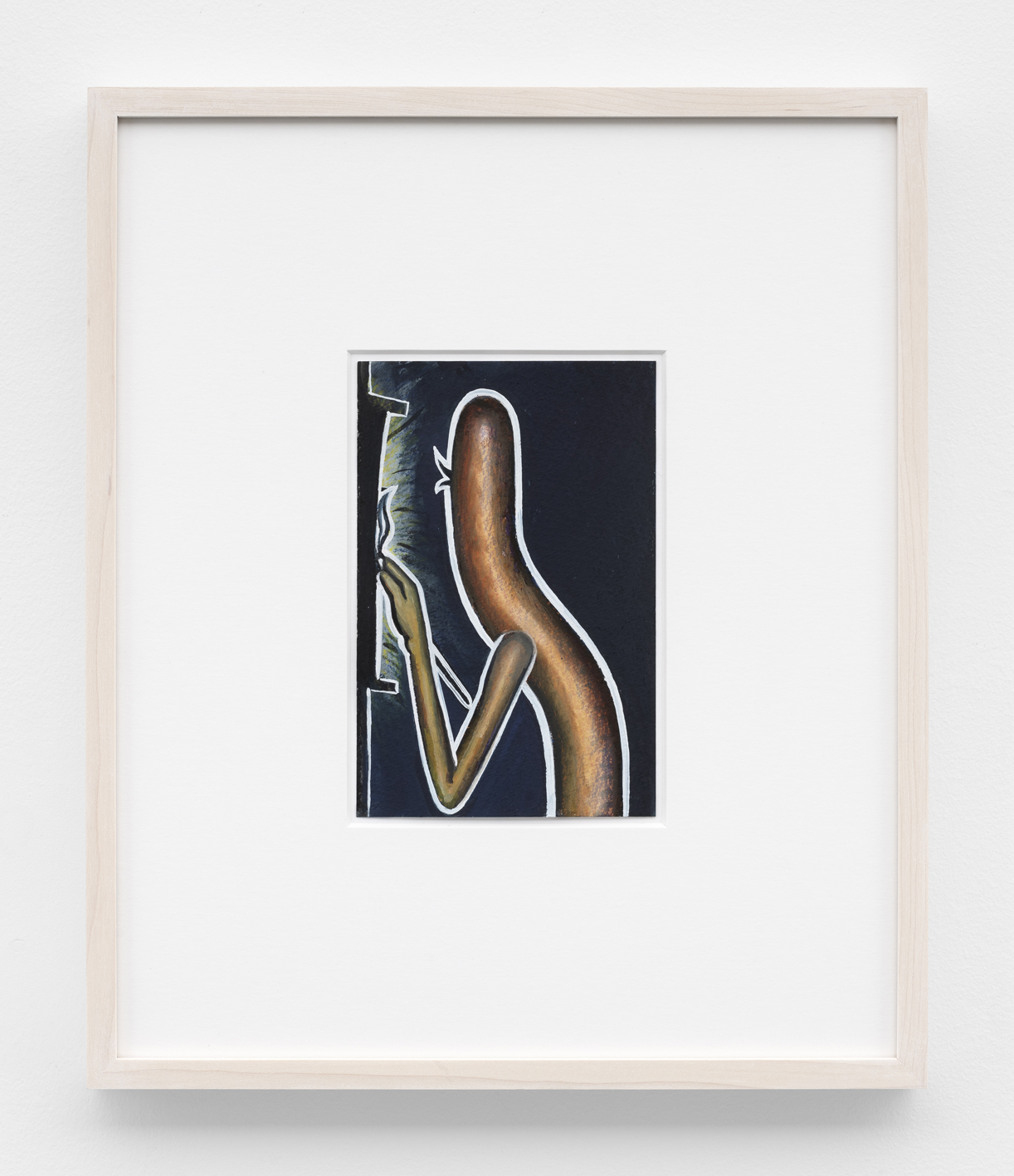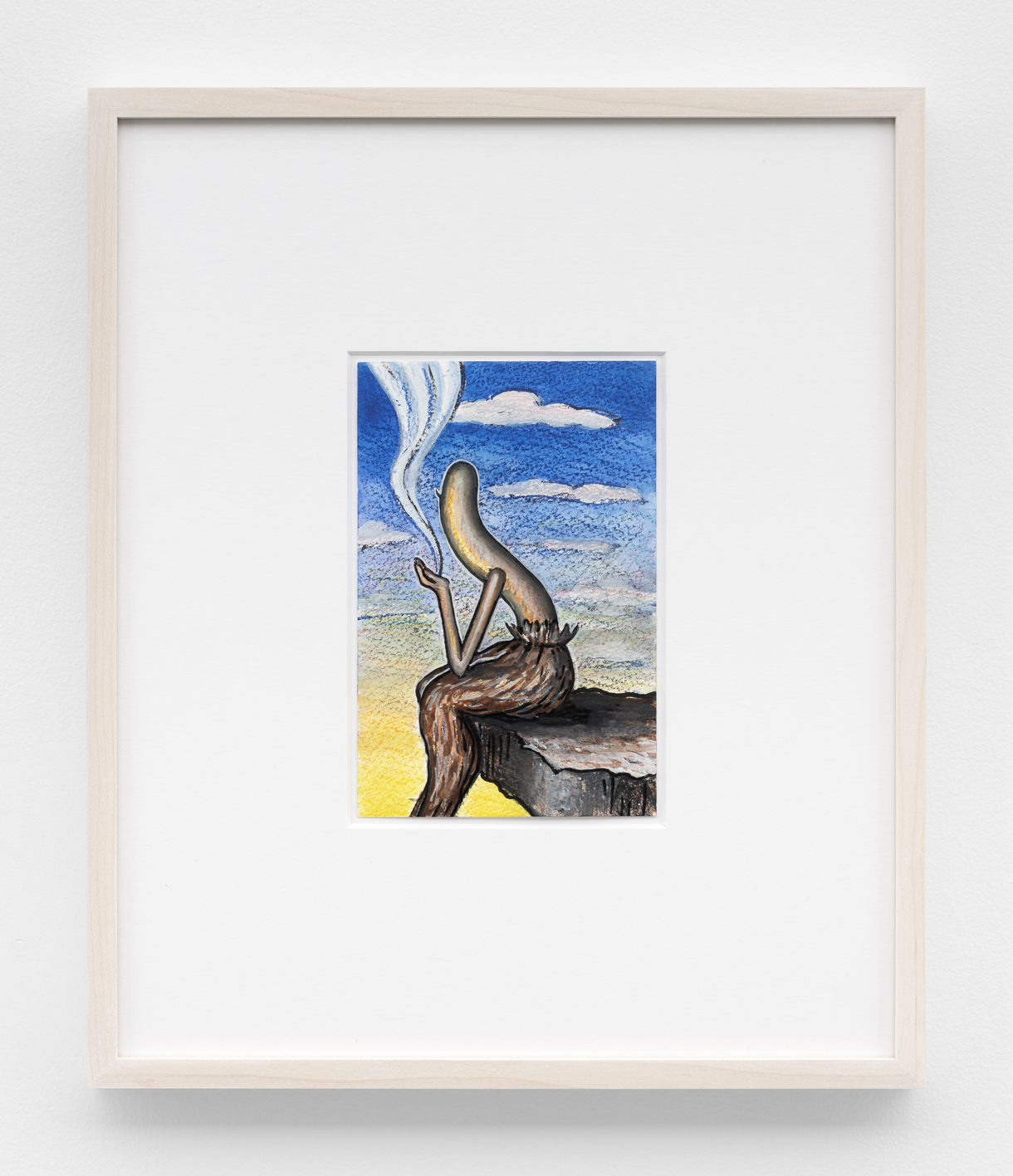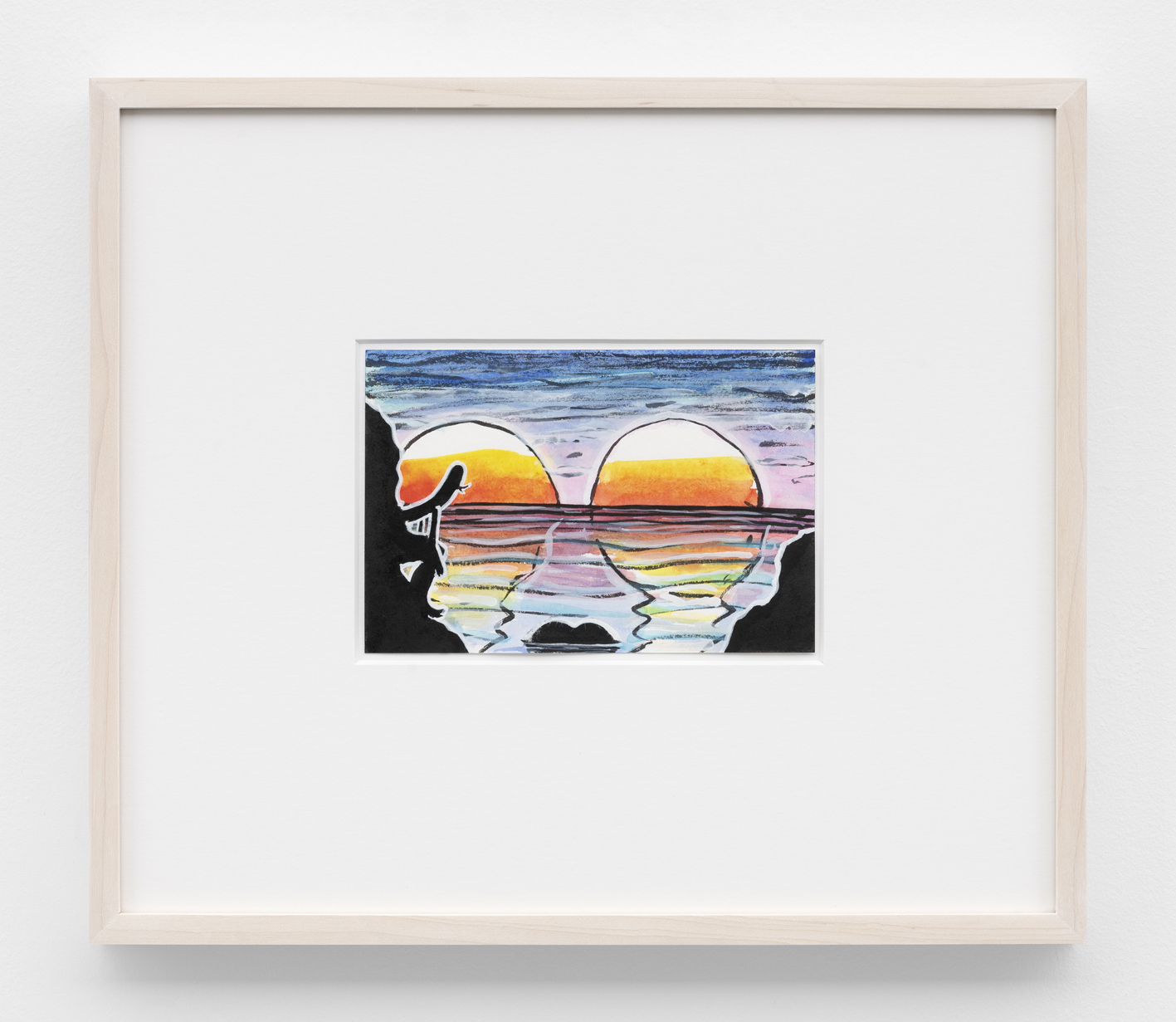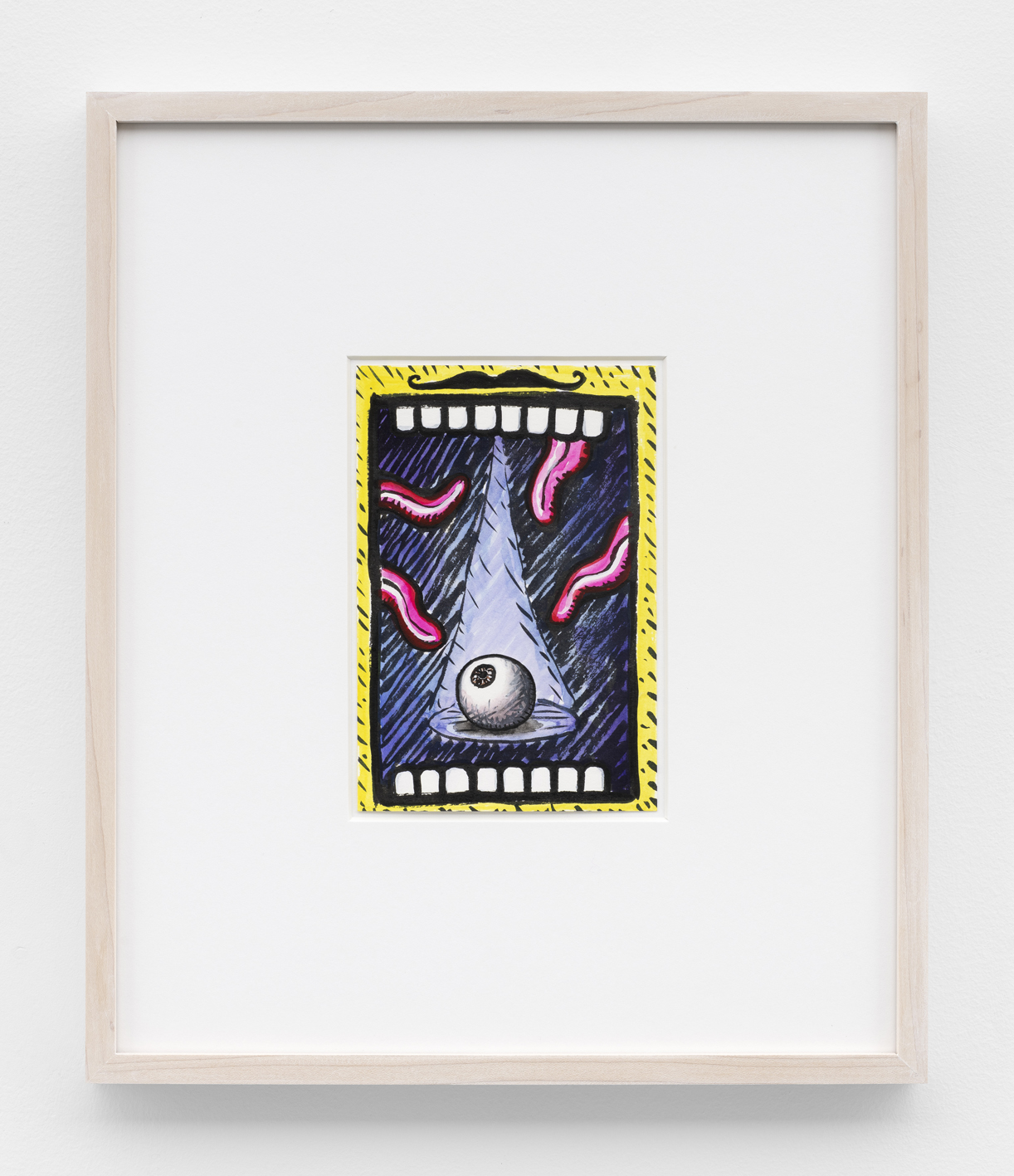Emily Mae Smith – Speculative Objects
Emily Mae Smith
Speculative Objects
| (Past) | 27.02.202127.02.21 — 03.04.202103.04.21 |
|---|---|
| (Gallery) | Rue de Livourne 35 Livornostraat |

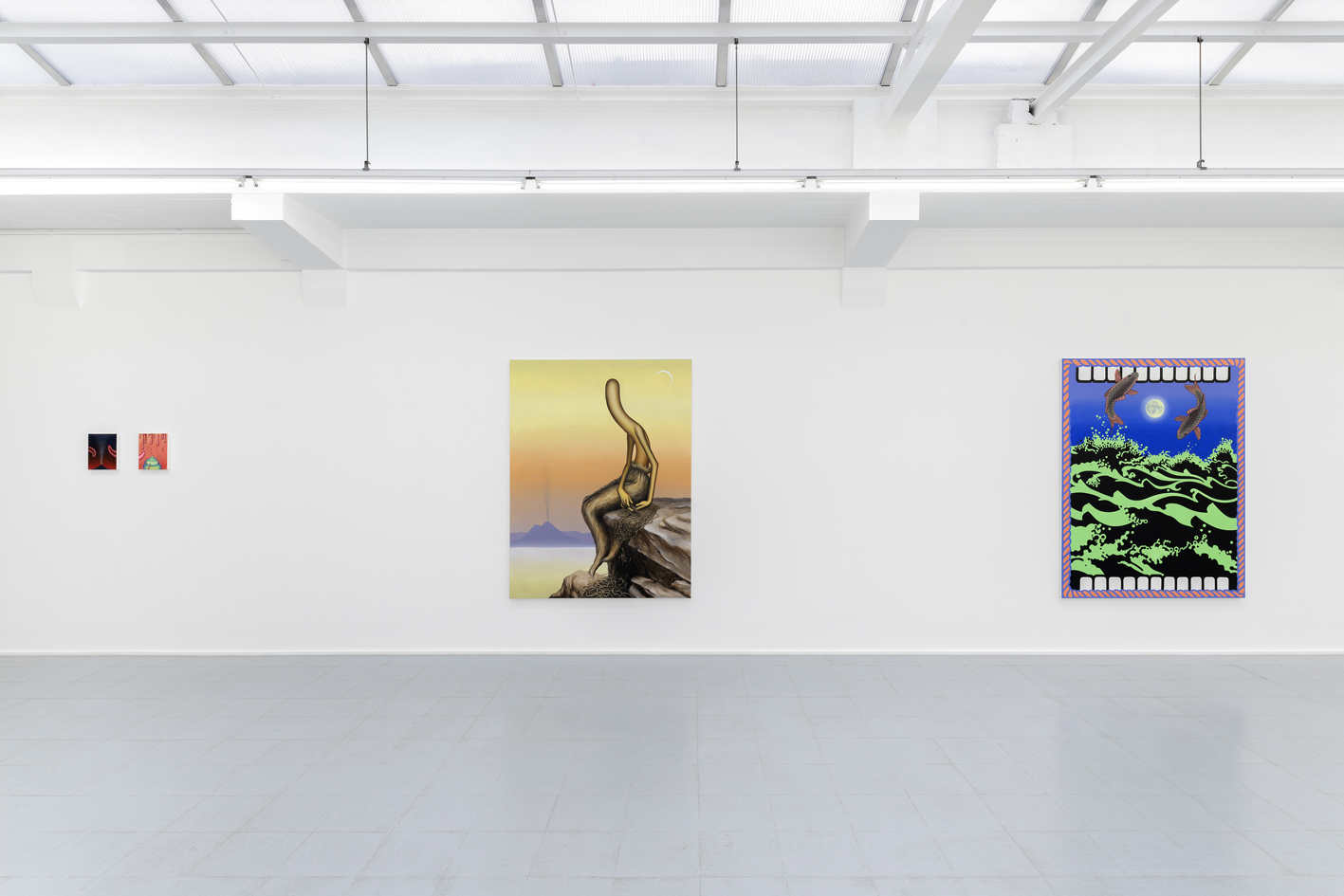








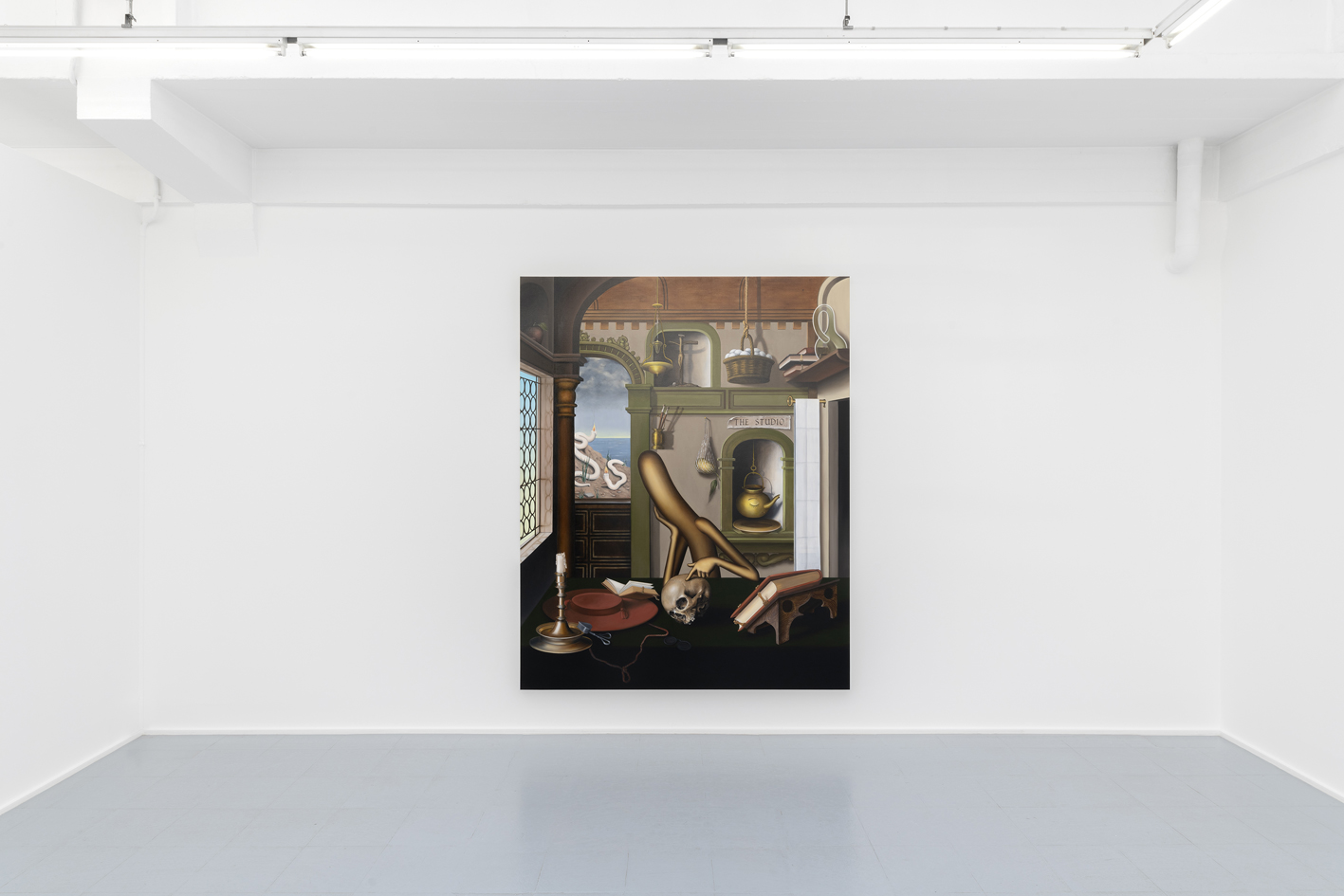
(01/11)Exhibition views
Painting is often seen as an act of thaumaturgy—an act of working form into wonders. This process is similarly performed through the material manipulation of paint on a canvas. As space akin to a site of piety often reserved for the veneration of the holy, or as a container for associated artifacts of praxis, the artist’s studio is considered a sacred space for studied acts of speculation and imagination. A place for giving form to ideas, equal parts conceptual maneuvering, visual expression and ardent periods of isolation. Similar to the lone sorceress breathing life into a broom as assistant to her bidding, the artist employs equal tactics of imbuing objects with speculative tools for critical, and at times individual, reflection.
In the exhibition Speculative Objects, the paintings of Emily Mae Smith evoke a transfiguration of art historical allusions that harmoniously, while humorously, coexist by maintaining each referent’s specific legibility. Throughout the artist’s body of work the broom becomes a form repeatedly transposed as a variety of subjects. It is a tool for both the cleaning and cleansing of space, a token of renewal. It’s enchanted persona, originally attributed to the poem “Der Zauberlehrling” (The Sorcerer’s Apprentice) written by Johann Wolfgang von Goethe in 1797, is ultimately an inanimate object brought to life. Smith utilizes the broom’s objectivity to act out roles of art historical femininity, the image and perception of women in art, as well as the role of female artists throughout history. In this new body of work Smith turns her chosen avatar towards the representation of the painter, a role Smith herself equally enacts as a subject. The broom has become an instrument for the artist to imbue codified notions of femininity without explicitly rendering the female form, reconfiguring her subject from objects reserved for the eyes of men into her own critical vocabulary of feminist wit. As critique to the phallocentrism of the classical western art historical canon, Smith’s stylized object is both an agent and gleaner of remnants from art history, as well as similar to the tool for applying paint to canvas—a brush. Smith’s paintings bend genres, creating combinations of canonical styles that provide a striingly contemporary twist on antiquated notions of gender binaries.
The Studio (Speculative Objects) (2021) provides a codex of the artist’s symbolic oeuvre collected into a virtual cabinet of curiosities. The painting is based on St Jerome in His Study (1521) attributed to Joos van Cleve which he produced in Antwerp. Both works frame a central figure pictured deep in thought, caught somewhere between pious reflection and secular boredom, an allegorical maneuvering between the sacred space of the studio and the surreal site of creativity. Smith’s Renaissance refiguring provides a complex matrix of interdependent symbols, referents and allusions that make up the artist’s broad visual vernacular. Smith redefines the vanitas of Saint’s original hermitage with that of the studio, transposing the accompanying memento mori into referents to her own body of work—a practice which spans almost 20 years. Inset top left is a reproduction of René Magritte’s Return to Nature (1938-39), a nod to the Belgian surrealist’s influence on Smith, as both painters thrive equally in cunning visual paradoxes.
The dexterity of Smith’s meticulous paintings offer a comical respite from the often misogynist tactics evidenced in art history, reformulating an alternative, and new, reality. Her techniques span Art Nouveau, Surrealism, Symbolism and Pop, all which are rendered seemingly effortless yet impeccably laboured. Smith’s work ricochets between the image of the artist historically and the artist herself currently, an arduous folding of the very act of painting into her unique painterly vocabulary. Speculative Objects maps the myriad of emotions housed within the space, and process, of painting. The mythical site of the studio is brought to the fore, outwardly offering a space to speculate, contemplate, forming theories evidenced by the creative act and rendered into the world through it. In a sense, giving life to form. This act has often been considered a studied belief in the varying definitions of painterly representation, yet above all else it is essentially very magical.
Alex Turgeon, January 2021
Artworks
(27)-
![Emily Mae Smith, The Studio (Speculative Objects)]()
(Artist) Emily Mae Smith (Title) The Studio (Speculative Objects) (Year) 2021 (medium) oil on linen (Dimensions) 213.4 x 170.2 cm;
84 x 67 in -
![Emily Mae Smith, Brush with Flame]()
(Artist) Emily Mae Smith (Title) Brush with Flame (Year) 2021 (medium) oil on linen (Dimensions) 170.2 x 129.5 cm;
67 x 51 in(Reference) EMSm098 -
![Emily Mae Smith, Sentient Sea]()
(Artist) Emily Mae Smith (Title) Sentient Sea (Year) 2021 (medium) oil on linen (Dimensions) 170.2 x 129.5 cm;
67 x 51 in(Reference) EMSm097 -
![Emily Mae Smith, Taste Test]()
(Artist) Emily Mae Smith (Title) Taste Test (Year) 2021 (medium) oil on linen (Dimensions) 25.4 x 20.3 cm;
10 x 8 in(Reference) EMSm100 -
![Emily Mae Smith, Sizzler]()
(Artist) Emily Mae Smith (Title) Sizzler (Year) 2021 (medium) oil on linen (Dimensions) 25.4 x 20.3 cm;
10 x 8 in(Reference) EMSm099 -
![Emily Mae Smith, La Vérité]()
(Artist) Emily Mae Smith (Title) La Vérité (Year) 2021 (medium) watercolor and ink on paper (Dimensions) 30.5 x 8.3 cm;
(unframed) 12 x 3 1/4 in(Reference) EMSm095 -
![Emily Mae Smith, Entanglement]()
(Artist) Emily Mae Smith (Title) Entanglement (Year) 2021 (medium) watercolor and ink on paper (Dimensions) 15.2 x 10.2 cm;
(unframed) 6 x 4 in(Reference) EMSm094 -
![Emily Mae Smith, Coat of Arms]()
(Artist) Emily Mae Smith (Title) Coat of Arms (Year) 2021 (medium) watercolor and ink on paper (Dimensions) 15.2 x 10.2 cm;
(unframed) 6 x 4 in(Reference) EMSm093 -
![Emily Mae Smith, The Musician I]()
(Artist) Emily Mae Smith (Title) The Musician I (Year) 2021 (medium) watercolor and ink on paper (Dimensions) 15.2 x 10.2 cm;
(unframed) 6 x 4 in(Reference) EMSm092 -
![Emily Mae Smith, The Brush and The Flame]()
(Artist) Emily Mae Smith (Title) The Brush and The Flame (Year) 2021 (medium) watercolor and ink on paper (Dimensions) 10.2 x 15.2 cm;
(unframed) 4 x 6 in(Reference) EMSm091 -
![Emily Mae Smith, Chorus]()
(Artist) Emily Mae Smith (Title) Chorus (Year) 2021 (medium) watercolor and ink on paper (Dimensions) 10.2 x 15.2 cm;
(unframed) 4 x 6 in(Reference) EMSm090 -
![Emily Mae Smith, Messenger]()
(Artist) Emily Mae Smith (Title) Messenger (Year) 2021 (medium) watercolor and ink on paper (Dimensions) 15.2 x 10.2 cm;
(unframed) 6 x 4 in(Reference) EMSm089 -
![Emily Mae Smith, Ginkgo]()
(Artist) Emily Mae Smith (Title) Ginkgo (Year) 2021 (medium) watercolor and ink on paper (Dimensions) 10.2 x 15.2 cm;
(unframed) 4 x 6 in(Reference) EMSm087 -
![Emily Mae Smith, The Field, The Gleaner and Me]()
(Artist) Emily Mae Smith (Title) The Field, The Gleaner and Me (Year) 2021 (medium) watercolor and ink on paper (Dimensions) 14.6 x 20.3 cm;
5 3/4 x 8 in(Reference) EMSm086 -
![Emily Mae Smith, Concentrate]()
(Artist) Emily Mae Smith (Title) Concentrate (Year) 2021 (medium) ink on paper (Dimensions) 15.2 x 10.2 cm;
(unframed) 6 x 4 in(Reference) EMSm085 -
![Emily Mae Smith, Harvest Time]()
(Artist) Emily Mae Smith (Title) Harvest Time (Year) 2021 (medium) watercolor and ink on paper (Dimensions) 15.2 x 10.2 cm;
(unframed) 6 x 4 in(Reference) EMSm084 -
![Emily Mae Smith, Farmer’s Daughter II]()
(Artist) Emily Mae Smith (Title) Farmer’s Daughter II (Year) 2021 (medium) watercolor, color pencil, ink on paper (Dimensions) 15.2 x 10.2 cm;
(unframed) 6 x 4 in(Reference) EMSm083 -
![Emily Mae Smith, Money Grubber]()
(Artist) Emily Mae Smith (Title) Money Grubber (Year) 2020 (medium) watercolor and ink on paper (Dimensions) 15.2 x 10.2 cm;
(unframed) 6 x 4 in(Reference) EMSm082 -
![Emily Mae Smith, Upon Inspection]()
(Artist) Emily Mae Smith (Title) Upon Inspection (Year) 2020 (medium) watercolor and ink on paper (Dimensions) 15.2 x 10.2 cm;
(unframed) 6 x 4 in(Reference) EMSm081 -
![Emily Mae Smith, Like a Saint]()
(Artist) Emily Mae Smith (Title) Like a Saint (Year) 2020 (medium) watercolor and ink on paper (Dimensions) 15.2 x 10.2 cm;
(unframed) 6 x 4 in(Reference) EMSm080 -
![Emily Mae Smith, Little Rogue Waves]()
(Artist) Emily Mae Smith (Title) Little Rogue Waves (Year) 2020 (medium) watercolor and ink on paper (Dimensions) 15.2 x 10.2 cm;
(unframed) 6 x 4 in(Reference) EMSm079 -
![Emily Mae Smith, Painter]()
(Artist) Emily Mae Smith (Title) Painter (Year) 2020 (medium) watercolor and ink on paper (Dimensions) 15.2 x 10.2 cm;
(unframed) 6 x 4 in(Reference) EMSm078 -
![Emily Mae Smith, Night Studio]()
(Artist) Emily Mae Smith (Title) Night Studio (Year) 2020 (medium) watercolor and ink on paper (Dimensions) 15.2 x 10.2 cm;
(unframed) 6 x 4 in(Reference) EMSm077 -
![Emily Mae Smith, Sacred Act of Painting]()
(Artist) Emily Mae Smith (Title) Sacred Act of Painting (Year) 2020 (medium) watercolor, color pencil, ink on paper (Dimensions) 15.2 x 10.2 cm (Reference) EMSm076 -
![Emily Mae Smith, Cliff Dreamer]()
(Artist) Emily Mae Smith (Title) Cliff Dreamer (Year) 2020 (medium) watercolor, color pencil, ink on paper (Dimensions) 15.2 x 10.2 cm;
(unframed) 6 x 4 in(Reference) EMSm075 -
![Emily Mae Smith, Double Sunset Cliffside]()
(Artist) Emily Mae Smith (Title) Double Sunset Cliffside (Year) 2020 (medium) watercolor and ink on paper (Dimensions) 10.2 x 15.2 cm;
(unframed) 4 x 6 in(Reference) EMSm074 -
![Emily Mae Smith, Discipline, Again]()
(Artist) Emily Mae Smith (Title) Discipline, Again (Year) 2020 (medium) watercolor and ink on paper (Dimensions) 15.2 x 10.2 cm;
(unframed) 6 x 4 in(Reference) EMSm073
